
a.
Find a quadratic model for the data.
a.
Answer to Problem 74E
Explanation of Solution
Given information:
The data in the table show the number
Use the regression feature of a graphing utility to find a quadratic model for the data.
Calculation:
Using as number of years since 2000, the given table can be replaced as
Enter the data from given table into your graphing utility calculator.
To enter the data first press
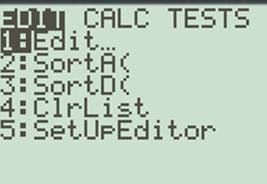
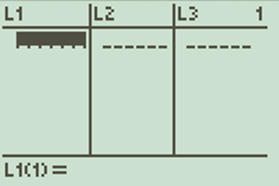
Now input all the data given sets followed by
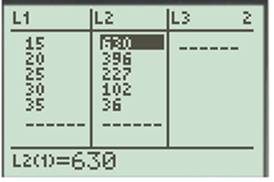
Before you use regression feature, make sure to enter the DignosticOn command stored in
The calculator does not show the value of
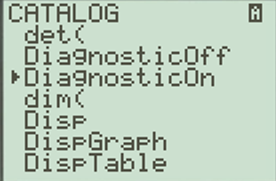

Press the
Move the cursor to the quadratic regression function.
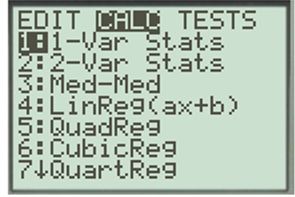
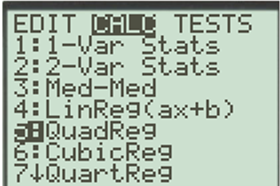
Press
Regression equation is stored in
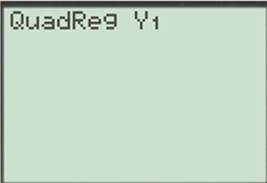
Now press
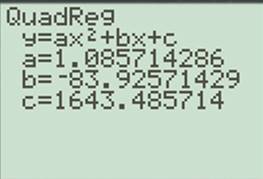
Hence, from the above display, write the Quadratic Regression equation
b.
Estimate the slope of the graph.
b.
Answer to Problem 74E
Explanation of Solution
Given information:
The data in the table show the number
Use the graphing utility to graph the model found in part (a). Estimate the slope of the graph when
Calculation:
The regression equation
Press the
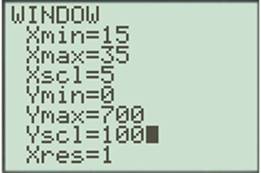
Press the
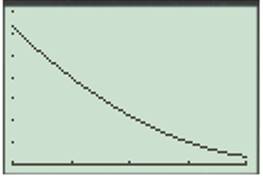
To estimate slope of
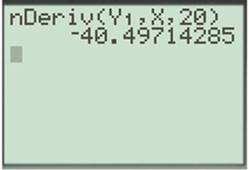
To copy the function
To estimate slope of
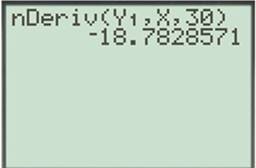
To copy the function
Hence, from the above display, slope of the graph when
c.
Graph the tangent line to the model.
Compare the slope.
c.
Answer to Problem 74E
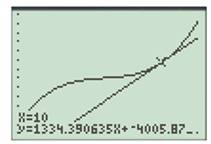
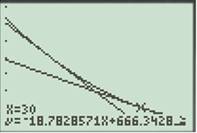
Explanation of Solution
Given information:
The data in the table show the number
Use the graphing utility to graph the tangent lines to the model
Calculation:
To graph the tangent line to the
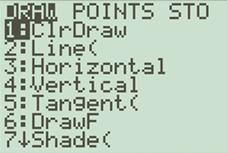
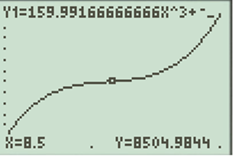
Input the value
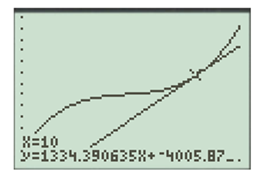
From the above display, at
Hence, the slope obtained above
To graph the tangent line to the
Input the value
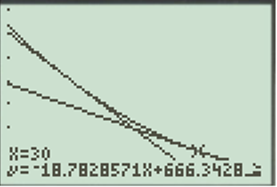
From the above display, at
Hence, the slope obtained above
d.
Explain what this means to the company selling the books.
d.
Answer to Problem 74E
If the price per book is different,the then the number of books sold will be different.
Explanation of Solution
Given information:
The data in the table show the number
The slopes of the of the tangent at
Calculation:
The slope of the tangent at
The different slopes of line represents that if the price per book is different,the then the number of books sold will be different.
Chapter 12 Solutions
EBK PRECALCULUS W/LIMITS
- Find the equation of the line / in the figure below. Give exact values using the form y = mx + b. m = b = y WebAssign Plot f(x) = 10* log 9 Xarrow_forwardA particle travels along a straight line path given by s=9.5t3-2.2t2-4.5t+9.9 (in meters). What time does it change direction? Report the higher of the answers to the nearest 2 decimal places in seconds.arrow_forwardUse the method of disks to find the volume of the solid that is obtained when the region under the curve y = over the interval [4,17] is rotated about the x-axis.arrow_forward
- 1. Find the area of the region enclosed between the curves y = x and y = x. Sketch the region.arrow_forwardfor the given rectangular coordinates, find two sets of polar coordinates for which 0≤θ<2π, one with r>0 and the other with r<0. (-2sqrt(3),9)arrow_forwardI circled the correct answer, could you show me how to do it using divergence and polar coordinatesarrow_forward
- The correct answer is D Could you explain and show the steps pleasearrow_forwardTaylor Series Approximation Example- H.W More terms used implies better approximation f(x) 4 f(x) Zero order f(x + 1) = f(x;) First order f(x; + 1) = f(x;) + f'(x;)h 1.0 Second order 0.5 True f(x + 1) = f(x) + f'(x)h + ƒ"(x;) h2 2! f(x+1) 0 x; = 0 x+1 = 1 x h f(x)=0.1x4-0.15x³- 0.5x2 -0.25x + 1.2 51 Taylor Series Approximation H.w: Smaller step size implies smaller error Errors f(x) + f(x,) Zero order f(x,+ 1) = f(x) First order 1.0 0.5 Reduced step size Second order True f(x + 1) = f(x) + f'(x)h f(x; + 1) = f(x) + f'(x)h + "(xi) h2 f(x,+1) O x₁ = 0 x+1=1 Using Taylor Series Expansion estimate f(1.35) with x0 =0.75 with 5 iterations (or & s= 5%) for f(x)=0.1x 0.15x³-0.5x²- 0.25x + 1.2 52arrow_forwardCould you explain this using the formula I attached and polar coorindatesarrow_forward
 Calculus: Early TranscendentalsCalculusISBN:9781285741550Author:James StewartPublisher:Cengage Learning
Calculus: Early TranscendentalsCalculusISBN:9781285741550Author:James StewartPublisher:Cengage Learning Thomas' Calculus (14th Edition)CalculusISBN:9780134438986Author:Joel R. Hass, Christopher E. Heil, Maurice D. WeirPublisher:PEARSON
Thomas' Calculus (14th Edition)CalculusISBN:9780134438986Author:Joel R. Hass, Christopher E. Heil, Maurice D. WeirPublisher:PEARSON Calculus: Early Transcendentals (3rd Edition)CalculusISBN:9780134763644Author:William L. Briggs, Lyle Cochran, Bernard Gillett, Eric SchulzPublisher:PEARSON
Calculus: Early Transcendentals (3rd Edition)CalculusISBN:9780134763644Author:William L. Briggs, Lyle Cochran, Bernard Gillett, Eric SchulzPublisher:PEARSON Calculus: Early TranscendentalsCalculusISBN:9781319050740Author:Jon Rogawski, Colin Adams, Robert FranzosaPublisher:W. H. Freeman
Calculus: Early TranscendentalsCalculusISBN:9781319050740Author:Jon Rogawski, Colin Adams, Robert FranzosaPublisher:W. H. Freeman
 Calculus: Early Transcendental FunctionsCalculusISBN:9781337552516Author:Ron Larson, Bruce H. EdwardsPublisher:Cengage Learning
Calculus: Early Transcendental FunctionsCalculusISBN:9781337552516Author:Ron Larson, Bruce H. EdwardsPublisher:Cengage Learning





